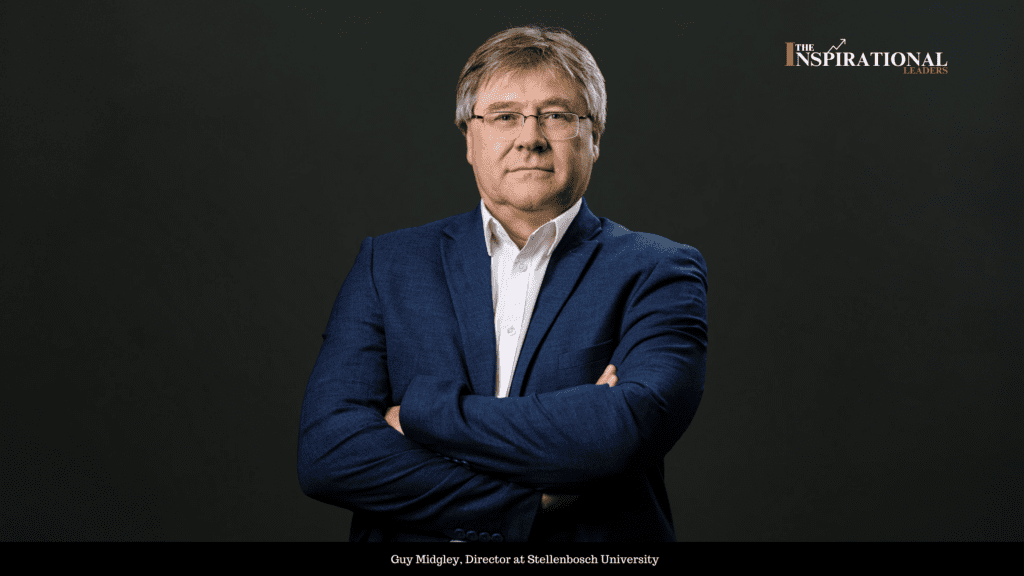Rethinking the Green Transition: Simon Michaux’s Blueprint for a Sustainable Future
Digital Version As the world races to address the escalating climate crisis, the need for innovative solutions and bold leadership has never been more urgent. Simon Michaux, Associate Professor at the Geological Survey of Finland (GTK), is one such leader, offering a unique perspective on the challenges and opportunities of the green transition. With a background in mining and a deep understanding of industrial systems, Michaux’s work focuses on diagnosing the bottlenecks in our current strategies and proposing unconventional solutions to create a sustainable future. In this interview, he shares his insights on the complexities of the energy transition, the role of critical minerals, and the transformative potential of circular economies. Our relationship with the environment must change. We must become aware of what energy is, where we get it from, and what raw materials mean for us. A Journey from Mining to Climate Action Simon Michaux’s journey into climate action began in the Australian mining industry, where he gained firsthand experience in resource extraction and industrial systems. However, his move to Europe in 2015 marked a turning point. “I came to Europe to learn about industrial recycling and the circular economy,” he recalls. Attending EU policy meetings and strategy workshops, Michaux quickly realized a disconnect between the proposed strategies and the realities of energy and resource systems. “The perception was that Europe led the world in phasing out fossil fuels and the green transition,” he says. “But the strategies I heard were not connected to reality at all.” This realization sparked a years-long effort to understand and communicate the systemic challenges of transitioning away from fossil fuels. Today, his work at GTK focuses on grounding the green transition in reality, diagnosing its flaws, and proposing alternative pathways. The Challenges of Securing Sustainable Raw Materials One of the most pressing challenges in the shift to renewable energy is securing sustainable raw materials. Michaux highlights the complexity of this task, noting that the industrial systems built over the past two centuries rely heavily on fossil fuels. “The last two centuries have been spent building the most complex technological industrial system the world has ever seen, using the most calorifically dense energy source the world has ever known—oil,” he explains. The green transition, while essential, faces significant bottlenecks in resource supply. Michaux emphasizes that the current approach may be leading us into a strategic dead end. “If we’re going in the wrong direction because we’ve forgotten what energy really is and where raw materials actually come from, what should we do?” he asks. His work seeks to answer this question by mapping out the physical units and resources required for a sustainable transition, revealing the logistical challenges and inherent weaknesses of current systems. The green transition operates on a much larger scale compared to the circular economy. Balancing Resource Demand and Environmental Protection The demand for critical minerals, essential for renewable energy technologies, poses a significant challenge to environmental sustainability. Michaux argues that our current approach is ecologically disastrous and faces serious resource bottlenecks. “Our current Plan B, the green transition, faces very serious bottlenecks in resource supply,” he says. “We must fundamentally reconsider our technology choices and how we utilize them.” To address these challenges, Michaux advocates for unconventional solutions, such as thorium-fueled modular molten salt reactors (MSRs). “I’ve been modeling these systems, and the results are amazing,” he shares. “It’s possible to deliver concentrated quantities of electrical power and industrial thermal heat from a very small value chain footprint.” However, he cautions that technological innovation alone is not enough. Society must also shift its priorities, moving away from consumerism and toward community and planetary stewardship. The Role of Circular Economies in Sustainability While the circular economy is often discussed alongside the green transition, Michaux points out that the two are not the same. “The green transition is orders of magnitude larger than the circular economy,” he explains. In a case study conducted in Hawaii, Michaux modeled both scenarios and found that the infrastructure required for the green transition far exceeds that needed for a fully implemented circular economy. Despite this, Michaux believes that a circular economy is essential for long-term stability in a post-fossil-fuel world. However, he argues that the current concept of the circular economy is thermodynamically imbalanced and needs to evolve. “In my work, I’ve tried to achieve this, creating what I call the Resource Balanced Economy (RBE),” he says. This approach integrates energy considerations into every action, ensuring a more sustainable and efficient use of resources. Collaboration for a Sustainable Future Michaux emphasizes the importance of collaboration between governments, businesses, and scientific institutions in addressing the climate crisis. “We must withdraw from the natural environment, contract our human systems footprint, and simplify our industrial system,” he says. He calls for a new form of social collaboration, warning that a scarcity mindset and conflict will only exacerbate the challenges we face. For industries pledging to reduce their carbon footprint, Michaux advises moving beyond regulatory compliance. “Many of the systems we rely on now must be replaced entirely,” he says. “This requires a full metamorphosis of our industrial energy system, which is yet to be understood by most people in positions of responsibility.” We must withdraw from the natural environment, contract our human systems footprint, and simplify our industrial system. Urgent Priorities and Breakthrough Solutions Looking ahead, Michaux identifies the evolution of societal paradigms as the most urgent priority. “Our relationship with the environment must change,” he says. “We must become aware of what energy is, where we get it from, and what raw materials mean for us.” He believes that breakthrough solutions, such as thorium MSRs, can play a key role in this transition, but only if accompanied by a fundamental shift in how we view and organize our systems. For the next generation of scientists, policymakers, and industry leaders, Michaux offers a clear message: “Engage critical thinking in all its forms. Collaborate with as many people as possible. Explore all rabbit holes, and don’t be limited by being




